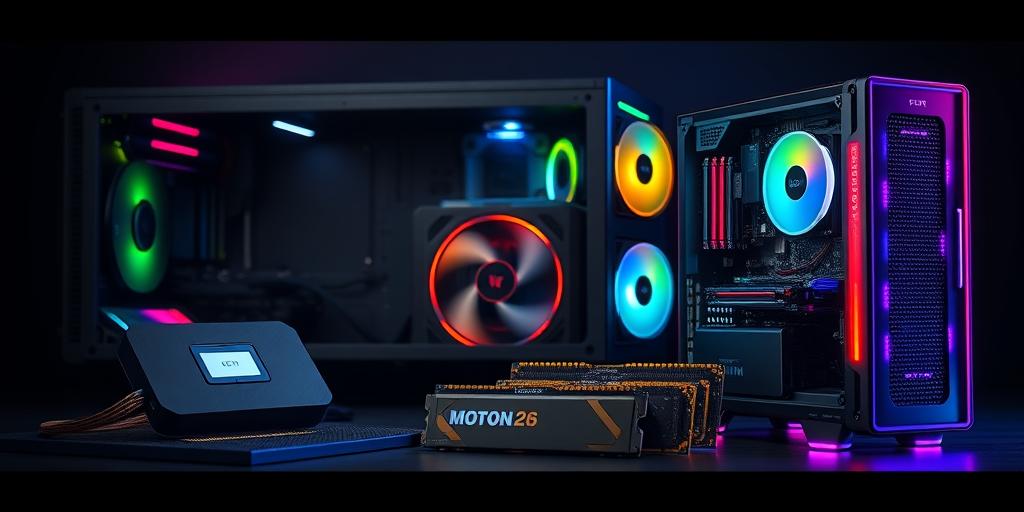Building a $1000 Gaming PC in 2024: The Ultimate Guide
Building your own gaming PC can be an exciting and rewarding experience. In 2024, a budget of $1000 offers a sweet spot for assembling a machine capable of running the latest games at respectable settings. This guide provides a detailed breakdown of components and considerations to help you maximize performance within this budget.
1. CPU (Central Processing Unit)
- AMD Ryzen 5 7600X: A strong contender, offering excellent gaming performance and future-proofing with its AM5 socket. It strikes a great balance between price and performance, making it ideal for a mid-range build.
- Intel Core i5-13600K: Another solid choice, providing competitive performance with the Ryzen 5 7600X. Consider this option if you're already invested in the Intel ecosystem.
2. Motherboard
- For AMD (Ryzen 5 7600X): Look for a B650 chipset motherboard. These boards offer a good balance of features and affordability for the AM5 platform.
- For Intel (Core i5-13600K): A B760 chipset motherboard will be suitable. Ensure it's compatible with 13th-generation Intel processors.
3. RAM (Random Access Memory)
- 16GB DDR5 5200MHz or 5600MHz: 16GB is the sweet spot for modern gaming. Opting for DDR5 ensures compatibility with newer CPUs and motherboards. Aim for speeds of 5200MHz or 5600MHz for optimal performance. Consider two 8GB sticks to take advantage of dual-channel memory.
4. GPU (Graphics Card)
- AMD Radeon RX 7600: Offers great performance for 1080p and 1440p gaming.
- NVIDIA GeForce RTX 3060: Remains a viable option, providing excellent value and features like ray tracing and DLSS.
5. Storage
- 1TB NVMe SSD: A 1TB NVMe SSD is essential for fast boot times and game loading. NVMe SSDs offer significantly faster speeds compared to traditional SATA SSDs or HDDs.
6. Power Supply
- 650W 80+ Bronze Certified: A reliable 650W power supply with an 80+ Bronze certification will provide sufficient power for your components and offer some headroom for future upgrades. Ensure it has the necessary connectors for your GPU and other components.
7. CPU Cooler
- Air Cooler (e.g., Cooler Master Hyper 212 or Noctua NH-U12S): An aftermarket air cooler will provide better cooling performance than the stock cooler, especially if you plan to overclock your CPU. Reputable brands like Cooler Master and Noctua offer excellent options.
8. Case
- Mid-Tower Case: A mid-tower case offers a good balance of size and compatibility, accommodating most components and providing adequate airflow. Look for cases with good cable management options and sufficient fan mounts.
Additional Considerations
- Operating System: Windows 11 is the latest version and offers the best compatibility with modern games and hardware. Factor in the cost of a Windows license if you don't already have one.
- Peripherals: Don't forget about essential peripherals like a monitor, keyboard, and mouse. These can be added later if necessary, but factor them into your overall budget.
Long-Term Upgradability
Choosing components that support future upgrades is essential. The AM5 platform, for example, is expected to support future generations of Ryzen processors, providing a clear upgrade path. Similarly, selecting a power supply with ample wattage allows you to upgrade your GPU without needing to replace the PSU.
Conclusion
Building a $1000 gaming PC in 2024 is entirely achievable, allowing you to enjoy modern games at impressive settings. By carefully selecting components and balancing performance with cost, you can create a powerful and upgradable gaming rig that will provide hours of enjoyment.









